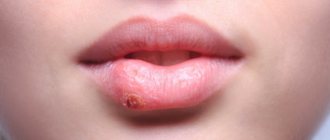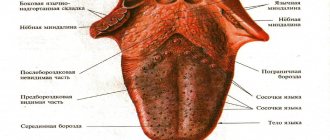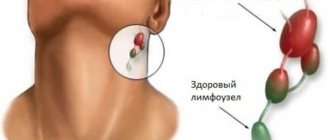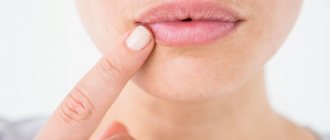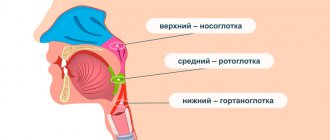The lips have very thin skin, so they are practically not protected from external influences. Because of this, every person has to deal with various lip diseases at least once in their life. In medicine they have a common name - cheilitis.
. There are about a dozen varieties of this disease.
Reasons why lip diseases develop
Human lips are very vulnerable, which often leads to redness, irritation, dryness, and even the formation of wounds and crusts. Most often, cheilitis develops under the influence of external factors.
: low temperature, wind, sun rays. Under their influence, the skin around the mouth dries out, which in itself is unpleasant. If you don't do anything about it, the problem will only get worse.
The second factor that causes lip diseases is various allergens. The culprit of the pathological reaction can be both food and cosmetics. Problems in the functioning of the internal systems of the body can also affect the face.
Most often, the delicate skin around the mouth suffers due to hormonal imbalances, fungal and viral infections. Vitamin deficiency, indigestion and general deterioration of immunity can aggravate the situation.
There are also less common causes of lip disease. They usually lead to certain types of cheilitis.
Why does my lip hurt?
Cheilitis
Cheilitis is a large group of inflammatory diseases of the mucous membrane and skin of the lips. They arise primarily or develop against the background of other pathologies. Typical signs include pain and burning in the lips when eating, opening the mouth, peeling, hyperemia, the appearance of cracks, crusts, and bleeding ulcers. The symptom can be provoked by the following types of cheilitis:
- Exfoliative.
It is formed against the background of neurotic disorders and is more often detected in women. It affects the red border without involving the mucous membrane, corners of the mouth, areas adjacent to the skin of the chin and nasolabial triangle. It manifests itself as a burning sensation, dry lips, and the formation of scales. The pain is more pronounced in the exudative form, also accompanied by swelling of the lips. - Glandular.
Diagnosed in people with developmental defects and acquired diseases of the minor salivary glands, caries, and periodontal diseases. The lower lip is most often affected. Initially, slight dryness is detected, which is subsequently replaced by painful erosions, deep bleeding and weeping cracks. - Contact allergic.
It is potentiated by cosmetics, formed by the habit of holding various objects in the mouth, and develops in people of certain professions (for example, musicians who play wind instruments). Severe itching, redness, and swelling of the lips prevail. The resulting blisters burst with the formation of painful erosions and cracks. - Meteorological.
Occurs under the influence of sunlight, less often - wind and cold. The exudative form is accompanied by burning, itching, and the appearance of small blisters, in place of which painful erosions remain. For the dry form, the presence of erosive defects is uncharacteristic; pain appears against the background of burning and dry lips. There is a danger of developing precancerous diseases and malignancy. - Atopic.
Diagnosed in patients with neurodermatitis and atopic dermatitis. Concerned about hyperemia, peeling, itching. Pain occurs when cracks form in the corners of the mouth. The listed manifestations are complemented by peeling and dryness of the face. - Hypovitaminosis.
It is provoked by a lack of B vitamins, especially B2. The skin of the lips is dry, hyperemic, covered with small vertical cracks that hurt and bleed. The mucous membrane is reddened, slightly swollen. The tongue is enlarged.
Herpes
The red border of the lips and the corners of the mouth are the favorite localizations of herpes simplex. The patient feels a burning sensation, tingling, and bloating. In the affected area, rashes form, which are a collection of small bubbles. As the changes progress, unpleasant symptoms increase, and pain is added to them. Then the bubbles open individually or after merging into one or more multi-chamber bubbles. In their place, erosions of irregular shape appear, painful when touched or when moving the lips.
Oral lichen planus
Involvement of the lip (mainly the upper lip) is characteristic of a rare atypical form of the disease. Papules, plaques or ulcers, erosive defects of irregular configuration, covered with fibrinous plaque, are found on the skin and mucous membrane. The pain syndrome is most pronounced in the presence of ulcers and is accompanied by a burning sensation. Several forms of lichen planus are often combined with each other or transformed into one another, so lesions can be present not only on the lips, but also on the gums, tongue, and oral mucosa.
Lip pain
Traumatic injuries
Acute damage to the mucous membrane or skin of the lip occurs as a result of injury from foreign objects or biting. It is quite rare. Manifested by the formation of a hematoma or erosive defect. The pain persists for 1-3 days. With secondary infection, erosion transforms into an ulcer, surrounding tissues swell, and pain intensifies.
Chronic trauma is possible when carious anterior teeth are damaged by sharp edges. It occurs with swelling, slight pain, and a feeling of discomfort. With prolonged injury, an ulcer forms. It is possible to develop a local or widespread inflammatory process with increased pain, swelling, and the appearance of purulent discharge.
Lip bruises are usually the result of fights. Children often develop as a result of falls. They are characterized by rapidly growing swelling and may be accompanied by abrasions of the mucous membrane due to sudden contact with the teeth. Painful sensations are pronounced in the first minutes after the injury, and then gradually subside. Recovery occurs after 1-2 weeks. Lip wounds are often lacerated and manifest as acute, raw pain and bleeding.
Trigeminal neuralgia
Repeated shooting intense pain impulses, reminiscent of an electric shock, are observed when the 2nd branch of the trigeminal nerve is involved. The pain spreads to the upper lip, upper cheek, upper jaw. When the 3rd branch is affected, similar sensations occur in the area of the lower lip, chin, lower jaw, and lower cheek. The duration of an attack of neuralgia ranges from a few seconds to 2 minutes.
Lip cancer
At the initial stage of lip cancer, there is no symptom. A painless, sometimes itchy ulcer or area of compaction forms on the lip (usually the lower lip). Pain occurs when nearby tissues grow. Becomes constant, progresses, reaches significant intensity. Upon examination, an ulcer with uneven edges or a node in the form of a wart or cauliflower inflorescence, covered with cracks and ulcers, is revealed.
Types of lip diseases
Cheilitis can be divided into several categories. Here are their names:
- exfoliative;
- glandular;
- meteorological;
- actinic;
- atopic;
- eczematous;
- candida.
In addition, there are other diseases that are not related to cheilitis. Therefore, dryness, peeling, crust formation, and a red border near the lips are causes for serious concern and a reason for examining the entire body.
Atopic cheilitis
Atopic cheilitis is sometimes called allergic because it is caused by various irritants. The cause of the disease can be food or cosmetics. It turns out that the allergen affects the skin of the lips both from the inside and outside.
The disease manifests itself as inflammation of the red border of the lips. The skin becomes dry and peels. Cracks, itching and burning may occur.
Most often, children and adolescents suffer from lip allergies. Often it is the only symptom of neurodermatitis or atopic dermatitis.
Glandular cheilitis
Glandular cheilitis is an inflammation of the salivary glands, which are located on the surface of the mucous membrane of the lips.
The disease is more common in men over 50 years of age and is characterized by the following symptoms:
- noticeable red dots appear on the lower lip;
- copious secretion of saliva from the inflamed glands, the appearance of “dew drops”;
- dryness, cracks and erosion;
- Bacteria can enter the irritated canals, leading to the formation of pus.
There are primary and secondary forms of glandular cheilitis. The primary disease develops due to genetic predisposition. Secondary lip disease can be caused by lupus, oral leukoplakia, or lichen planus.
Meteorological cheilitis
People have to deal with this disease all the time. Standard chapping, which more often appears in winter, is meteorological cheilitis.
The first sign of the disease is a feeling of skin tightness. In advanced cases, it turns red, dries out, and becomes covered with cracks. This lip inflammation can be treated at home. It is enough to isolate yourself from harmful factors, moisturize and nourish the skin until it is completely restored.
Eczematous cheilitis
Eczematous cheilitis is one of the manifestations of eczema - an inflammatory process of a neuroallergic nature, which most often manifests itself on the face or dry areas of the body. Usually the disease is accompanied by constant dryness and redness. In advanced cases, the skin begins to peel off and become covered with blisters.
The disease often affects the tissue around the lips, so the patient may develop a red border, as in the photo on the right. This area of skin is constantly itchy and itchy.
If the disease is chronic, the symptoms are less pronounced. But in this case, seals appear on the skin.
Actinic cheilitis
Many people believe that lips need to be protected only in winter. Therefore, it is at this time of year that people stock up on moisturizing and nourishing balms to relieve dry and itchy lips. However, delicate skin must be protected not only from frost, but also from the burning sun.
With increased sensitivity to ultraviolet radiation and prolonged exposure to open areas, actinic cheilitis forms. His symptoms are standard:
- dryness, flaking;
- redness and swelling;
- compaction of individual areas.
If you do nothing, your lips become crusty. This is how the body tries to somehow protect the vulnerable part of the face. This symptom appears less frequently than others.
In advanced cases, ulcers, erosions and small compactions occur around the oral cavity. This condition is precancerous.
Exfoliative cheilitis
The exfoliative form of the disease occurs due to stress and disturbances in the functioning of the immune system. Genetic predisposition plays a major role. If your parents had this disease, there is a high risk that you will develop it too.
Exfoliative cheilitis on the lips occurs in two forms: exudative and dry. In the first case, you can observe the so-called yellow lips (pictured). A dense crust of this shade forms on the skin.
The yellow crust is easy to tear off; this process does not cause much discomfort. There are no erosions or other damage under the crust.
In the dry form of the disease, a crust also forms on the lips, but not yellow, but a lighter shade. The patient is concerned about dry skin, which explains the name of the disease. There is a desire to lick your teeth, but it is better not to do this: you can cause an infection and provoke more irritation.
Candidal cheilitis
If the lips are red, inflamed and crusted with a cheesy coating of white or yellowish color, it means that the cause of these symptoms is candidiasis. If you clean off the plaque, inflamed areas of skin will be exposed. How such a lip disease manifests itself is shown in the photo.
The disease occurs due to the excessive development of the Candida fungus. The pathogen lives on the human mucous membranes constantly, but the active development of the fungus begins only under favorable conditions, which include:
- decreased immunity due to past illnesses or lack of nutrients;
- long-term use of antibiotics;
- a sharp change in climate to a hotter and more humid one.
Fungal inflammation of the lips begins externally, but can spread to the internal tissues of the oral cavity, thus leading to candidal stomatitis.
Lip cancer
Many of these diseases, if not given proper attention to their treatment, lead to cancer. Perhaps this is the most terrible disease that can affect the lips and oral cavity.
At first, the symptoms of cancer are unremarkable. The lips will turn red and there will be slight inflammation. The skin may become dry and cracked. If the patient moisturizes and nourishes the affected tissues, but the lips remain sore for several weeks, he should sound the alarm and consult a specialist. Later, ulcers and lumps may appear.
Usually, if treatment is started correctly and on time, the cancer recedes completely. Only in rare cases are relapses possible.
There is another disease that is compared to cancer - Manganotti syndrome. The disease manifests itself in the form of a noticeable ulcer on the lip, which is precancerous. However, due to the fact that in most cases the syndrome still develops into a tumor, it is more often classified as oncological diseases.
What it is
Cheilitis on the lips is a common phenomenon, however, most patients do not even suspect that damage to the mucous membrane and skin of the lips is a serious pathology.
Cheilitis is a disease associated with an inflammatory process that affects not only the mucous membrane, but also the red border of the lips. In addition, cheilitis is any abnormal change in the epithelial layer of the lips that occurs against the background of a serious disease of the internal organs or a sharp drop in immunity.
The location of the damaged areas may not be limited only to inflammation of the lip. In addition to dislocation on the upper and lower lip, as well as in the corners of the mouth (the so-called “angular cheilitis”), similar foci of inflammation can appear anywhere on the body, especially on the mucous membranes. The problem of damage specifically to the lip area is due to the fact that they are deprived of a protective layer, while they are constantly exposed to external negative influences, leading to overdrying, the formation of microcracks, and infections.
Features of cheilitis in children
Lips suffer due to minimal protection. In children it is even weaker, so cheilitis worries them somewhat more often. In addition to children, the risk group includes the elderly and pregnant women.
The main causes of cheilitis in childhood:
- allergic reaction to food;
- use of products for the care of the skin of the lips and around them, not intended for children;
- genetic predisposition;
- infectious and fungal infections;
- weather.
Typically, infantile cheilitis does not develop until critical stages. When children's lips turn red, parents immediately begin to treat them. After all, people pay more attention to the health of the younger generation than to their own. If cheilitis in children still requires treatment, therapy should not be delayed longer than a few weeks. The main thing is to remove all allergens from the children's diet and balance the diet.
How to treat lips with cheilitis
The most important thing in treating cheilitis is to identify its cause, which is difficult to do without professional help. You'll have to contact a specialist. First, it is better to go to a therapist, and he will then refer you to a specialist doctor.
Typically, treatment for diseases of the lips and skin around the mouth is based on eliminating not the symptoms, but the root cause. It includes lifestyle changes, proper nutrition, and medication.
If the cause of inflammation is an infectious or fungal infection, local drugs are included in the therapy. Typically, patients are prescribed various medicinal ointments for external use, which must be applied to damaged skin several times a day:
- anti-inflammatory – Tetracycline, Erythromycin;
- antifungal – Clotrimazole;
- hormonal – Prednisolone.
To cure lips, you need to influence them not only from the outside, but also from the inside. The skin around the mouth often suffers from a lack of B vitamins, so they are often prescribed in the treatment of lips.
Treatment
Conservative therapy
The list of therapeutic measures is determined taking into account the characteristics of the pathology that causes pain in the lip:
- Cheilitis
. Provoking factors (dental pathologies, meteorological influences, contact with cosmetics) are excluded or minimized, and neurotic disorders are treated. Anti-inflammatory, antipruritic, antiallergic ointments (including hormonal ones), protective creams, immunocorrectors, and general antiviral agents are used. - Herpes
. The tendency to relapse necessitates complex therapy aimed at restoring immunity. Antiviral drugs are used in the first 5-7 days of illness, subsequently immunomodulators and recombinant alpha-interferons are prescribed. After 1-2 months it is recommended to vaccinate. - Lichen planus
. To eliminate inflammation and pain in ulcerative defects, topical corticosteroids, pain relief with local anesthetics, and medications to stimulate regeneration are indicated. To prevent fungal infections during treatment with steroids, antifungal agents are prescribed orally. For neurotic disorders, sedative therapy is required, for allergic predisposition - hyposensitizing therapy, for immunodeficiencies - immunomodulatory therapy. - Injuries
. Patients with chronic damage require treatment of carious teeth to eliminate the traumatic factor. In other cases, in the absence of wounds requiring surgical treatment, a gentle diet, cold to reduce swelling, then dry heat to accelerate resorption are advised. - Trigeminal neuralgia
. Therapy is carried out using anticonvulsants, antispasmodics, and antihistamines. Therapeutic blockades with glucocorticoids and physiotherapeutic procedures are effective: ultraphonophoresis with hydrocortisone, galvanization with novocaine. - Lip cancer
. In stage 1, in some cases, radiotherapy is used as the main treatment method. For patients with advanced stages, radiotherapy and chemotherapy are prescribed in the pre- and postoperative period or carried out as part of palliative treatment.
Surgery
Surgical techniques for pain in the lip are rarely used. Exceptions are open injuries and cancer. For fresh wounds, PSO of the wound of the maxillofacial area is necessary. Neoplasms are excised, and according to indications, a Vanach operation, a Kreill operation, and other interventions involving the removal of regional lymph nodes are performed. For patients with damage to the branches of the trigeminal nerve and persistent neuralgia, methods of stereotactic radiosurgery and percutaneous radiofrequency destruction may be recommended.
How to get rid of unpleasant symptoms at home
It is not worth treating at home without seeing a doctor. However, there are ways that you can resort to to reduce discomfort:
- If your lips become inflamed due to the sun or cold, it is advisable that they are always covered with a protective layer of balm.
- For severe itching and burning, which occur in almost all forms of cheilitis, cold compresses will help. Before applying them, the skin is covered with a layer of balm so that the lips are treated simultaneously with the reduction of pain.
- If your lips are red and covered with cracks, sores or any other open wounds, you need to make sure that bacteria do not get into them. The surrounding skin and teeth should be treated with a cotton pad soaked in hydrogen peroxide or Miramistin. Special antiseptic ointments will have the best effect.
- If pain and itching are unbearable, painkillers can be used. Ointments with a cooling effect will have the same effect.
All methods of folk treatment for cheilitis will be useless if you resort to them thoughtlessly - without consulting a doctor. In most cases, inflammation, redness and itching of the lips are harmless. Such symptoms can go away even without therapy, but sometimes they indicate dangerous diseases, so medical help should not be neglected.

